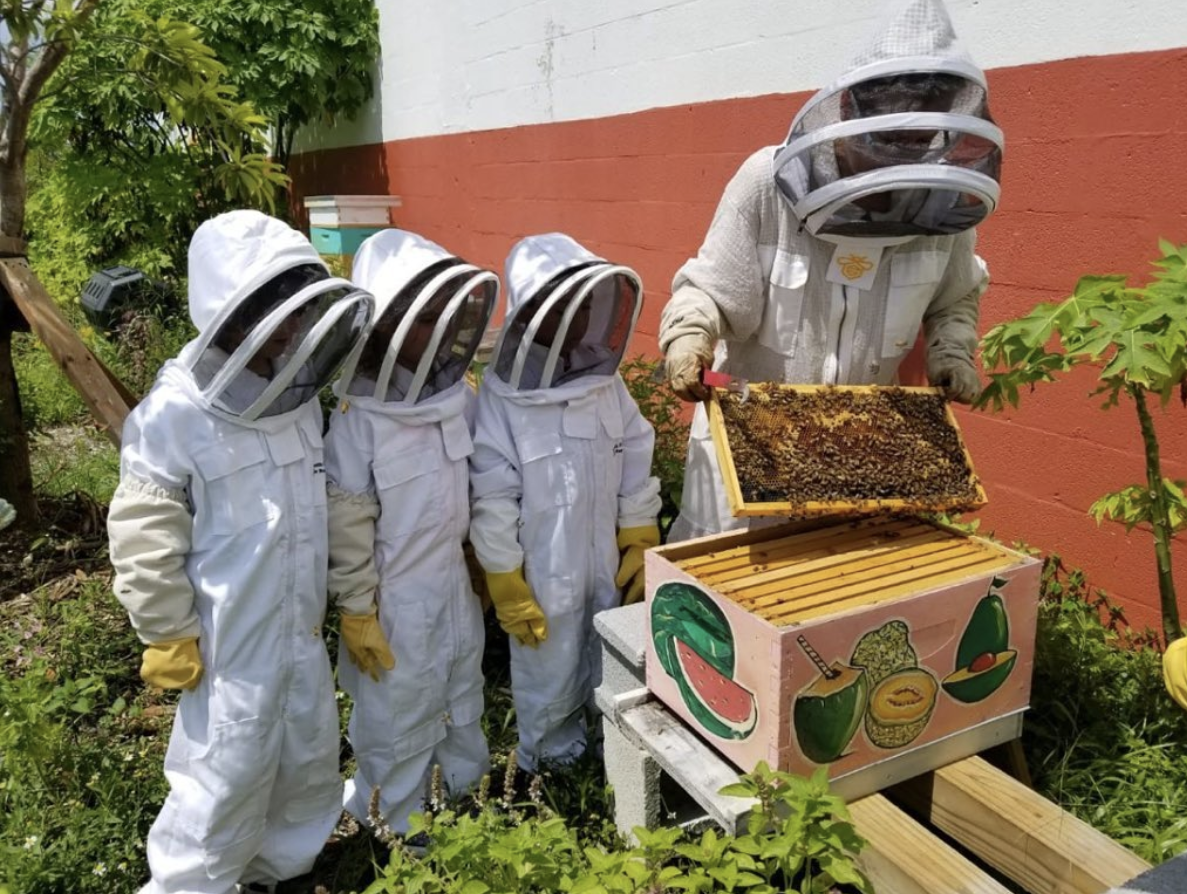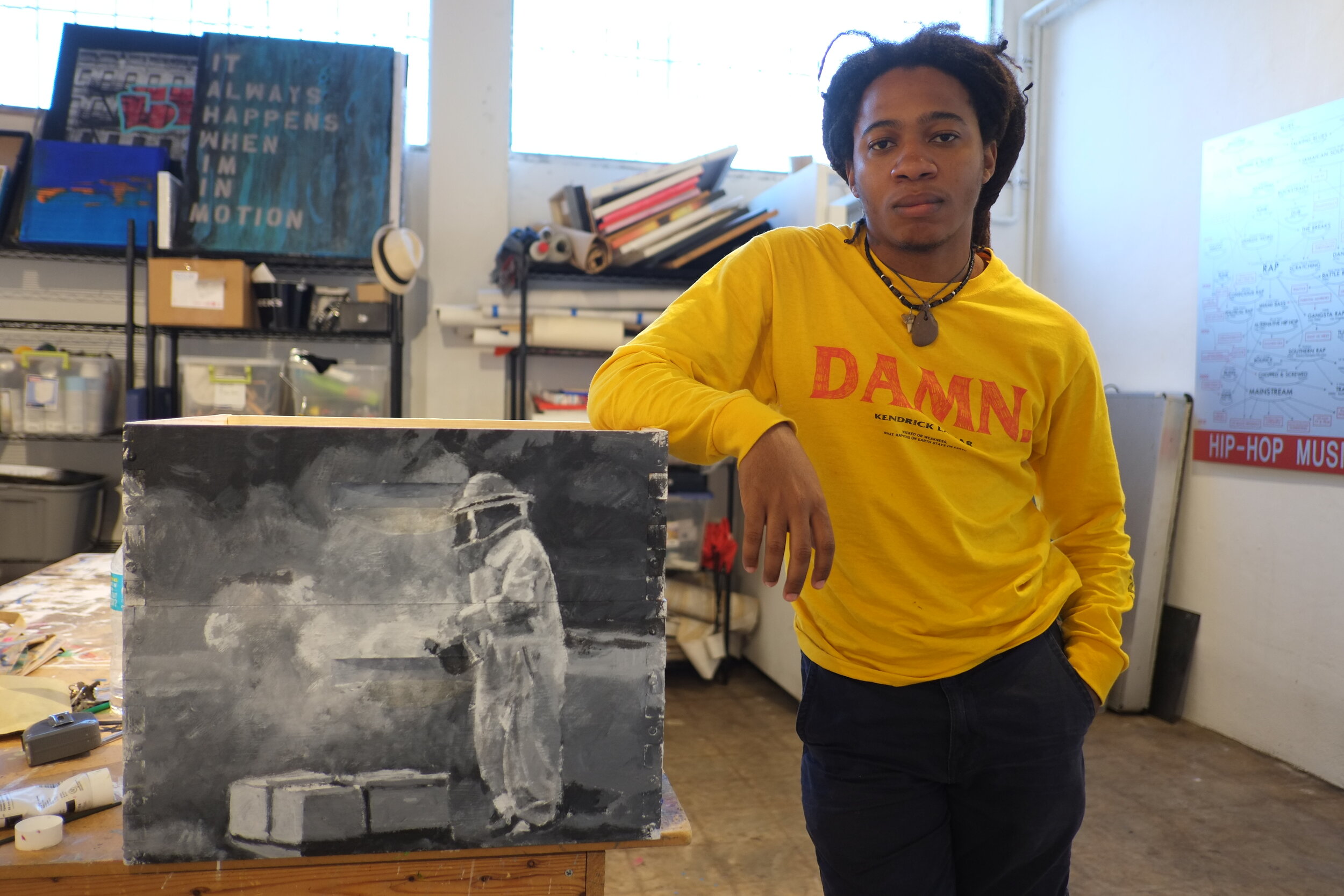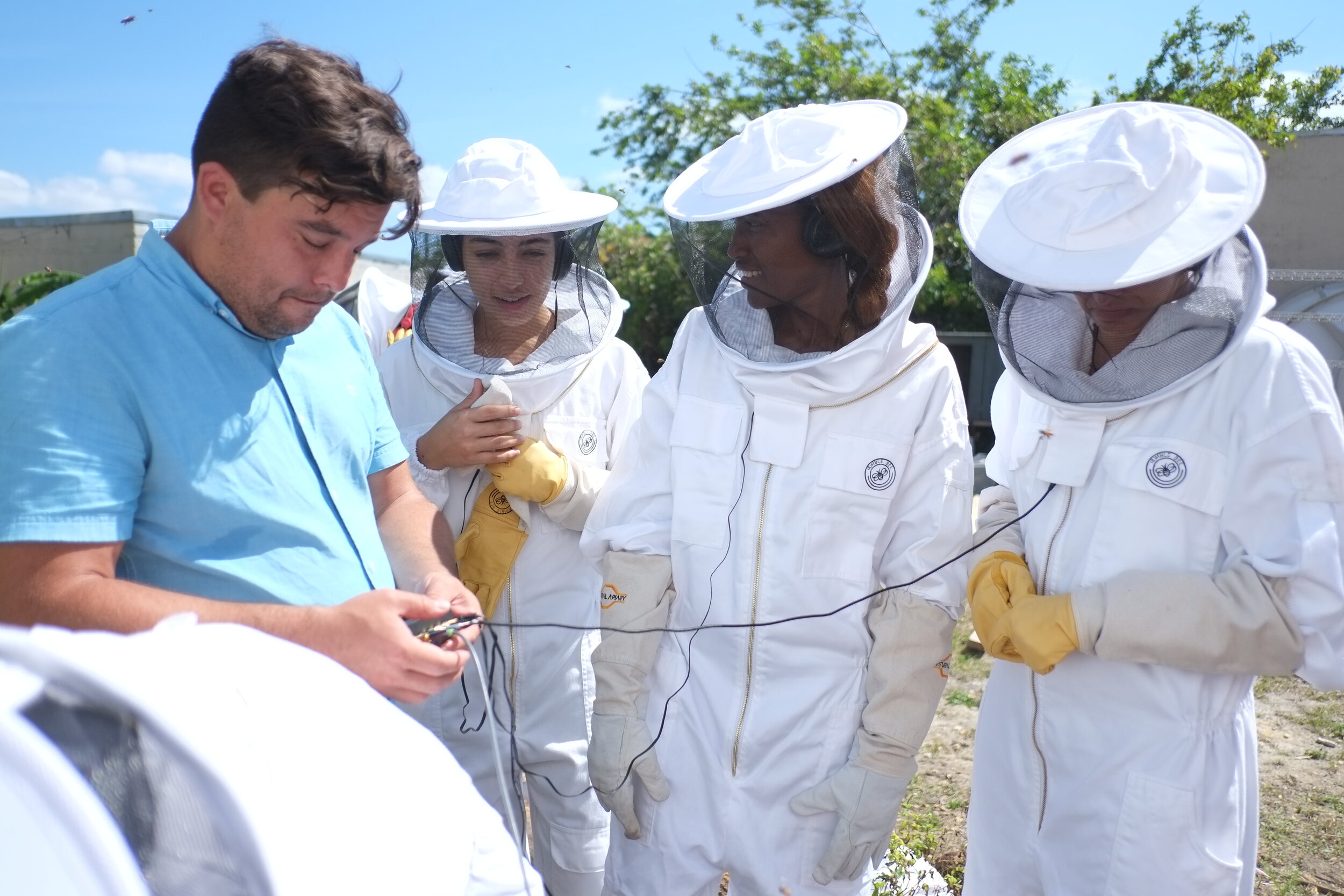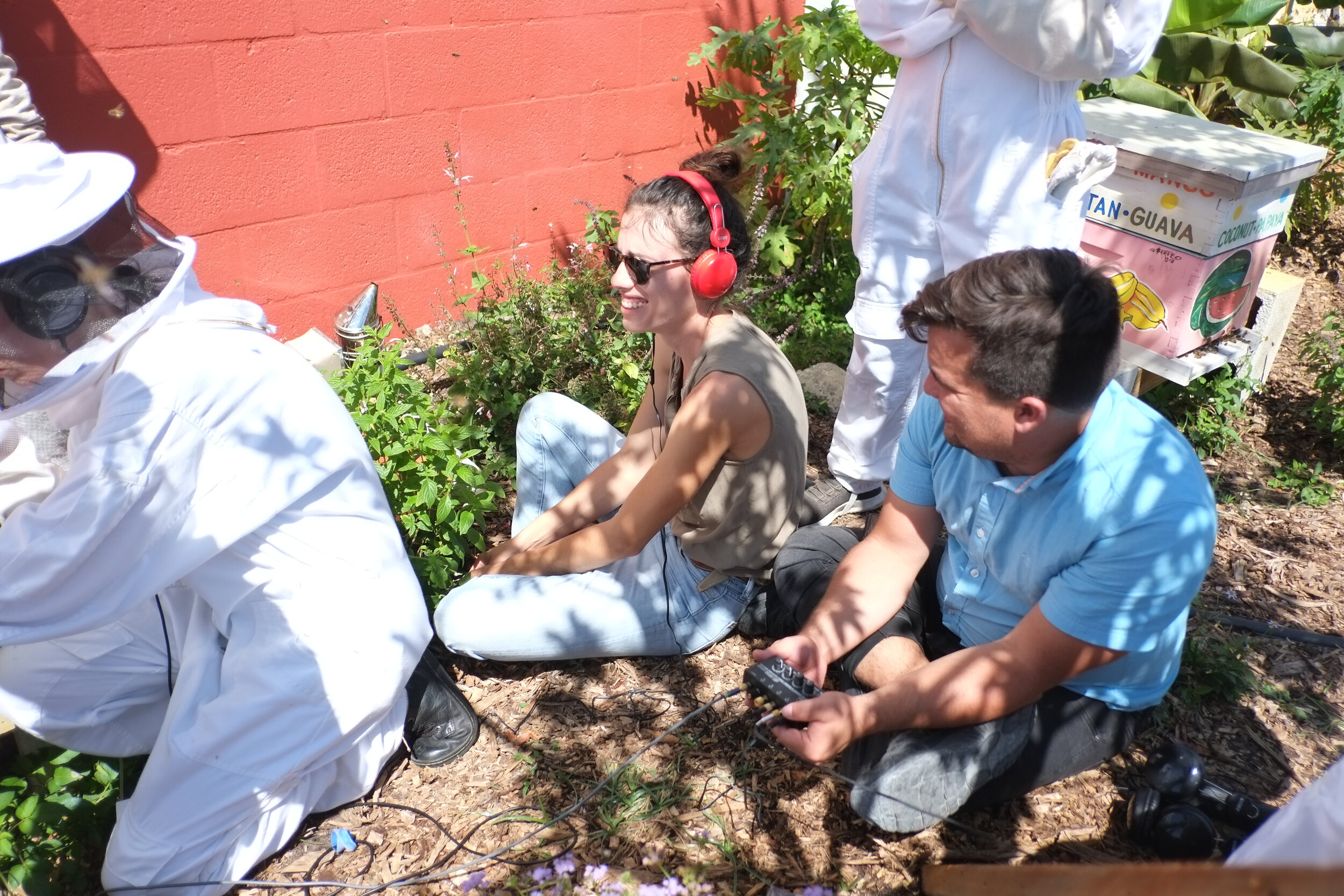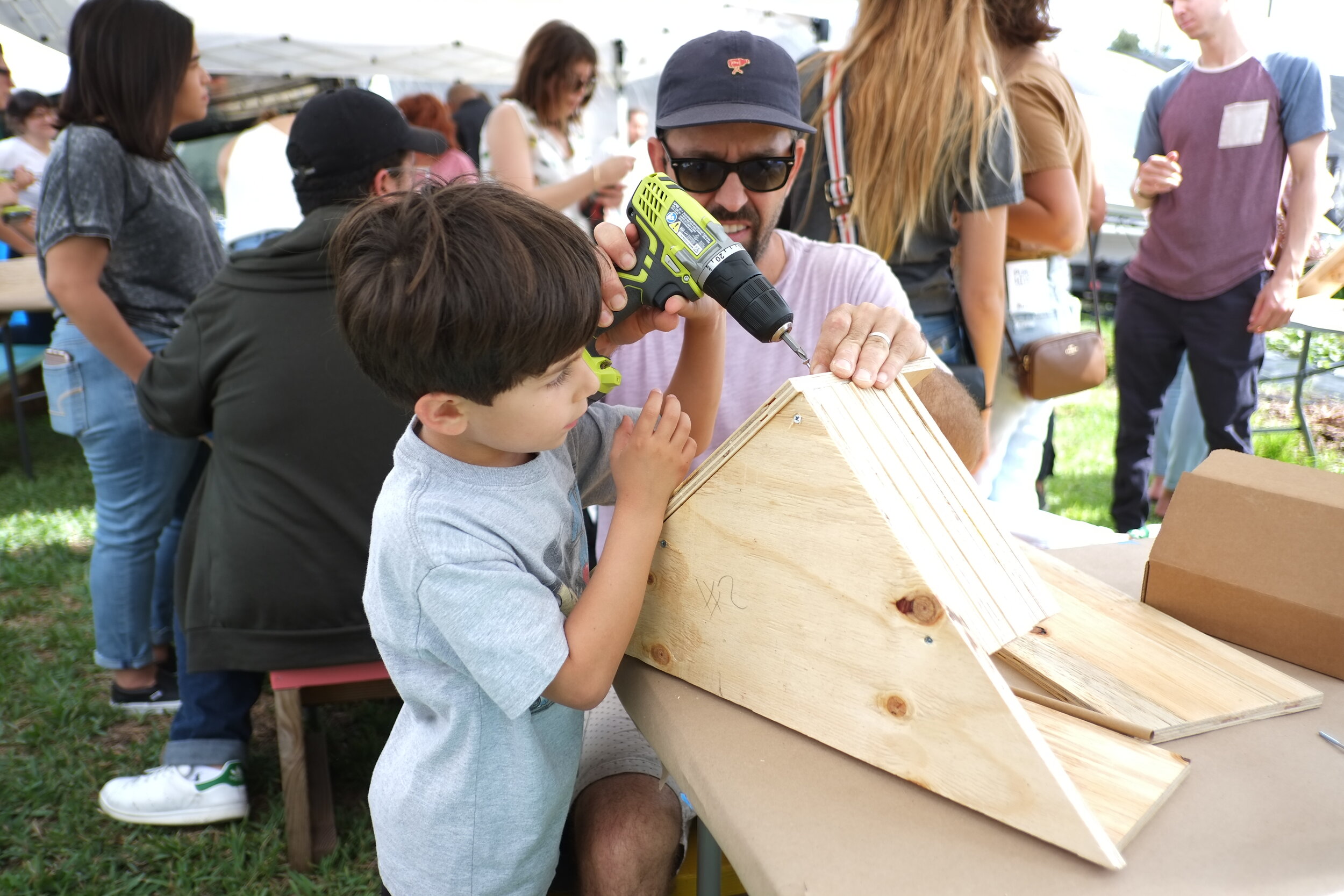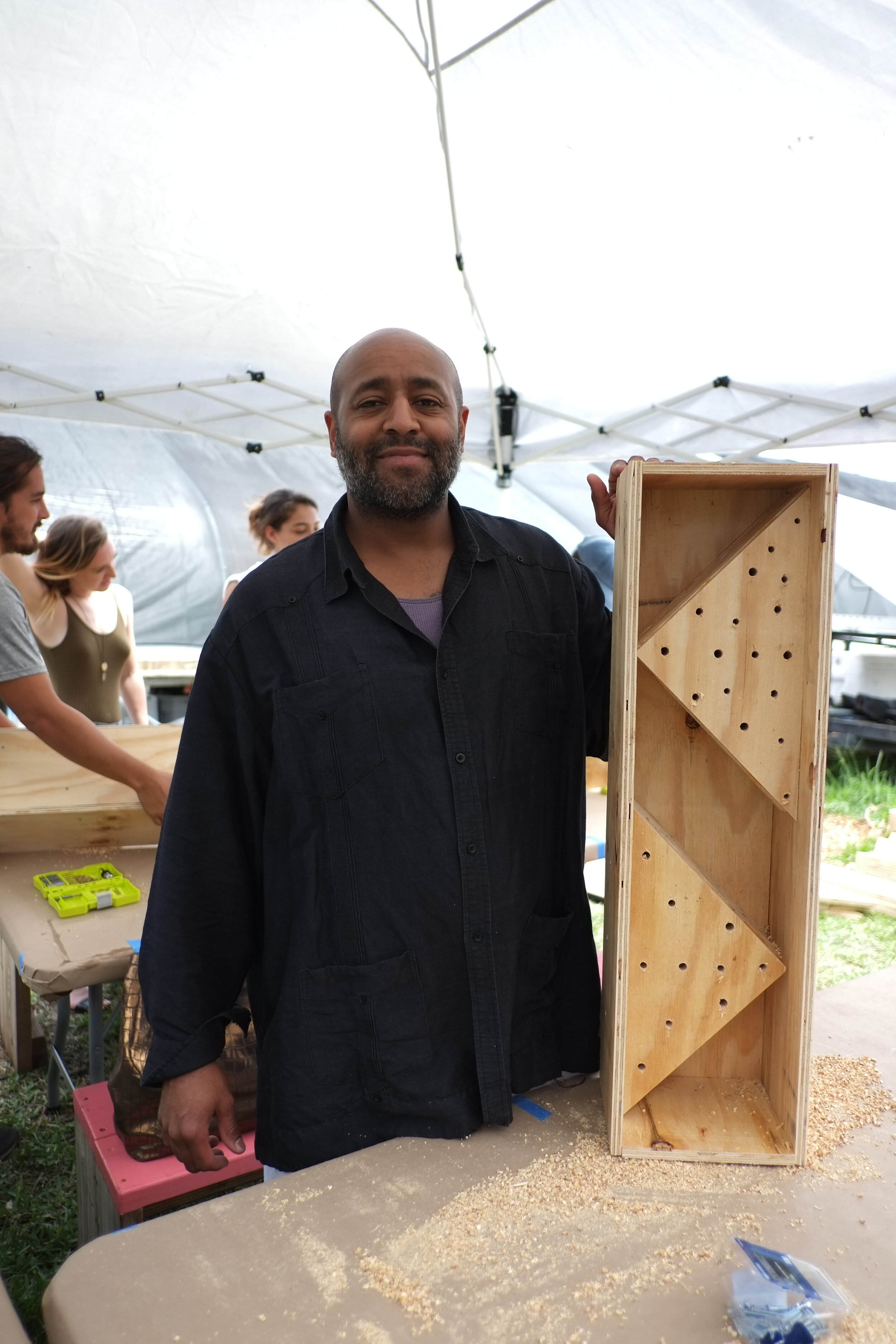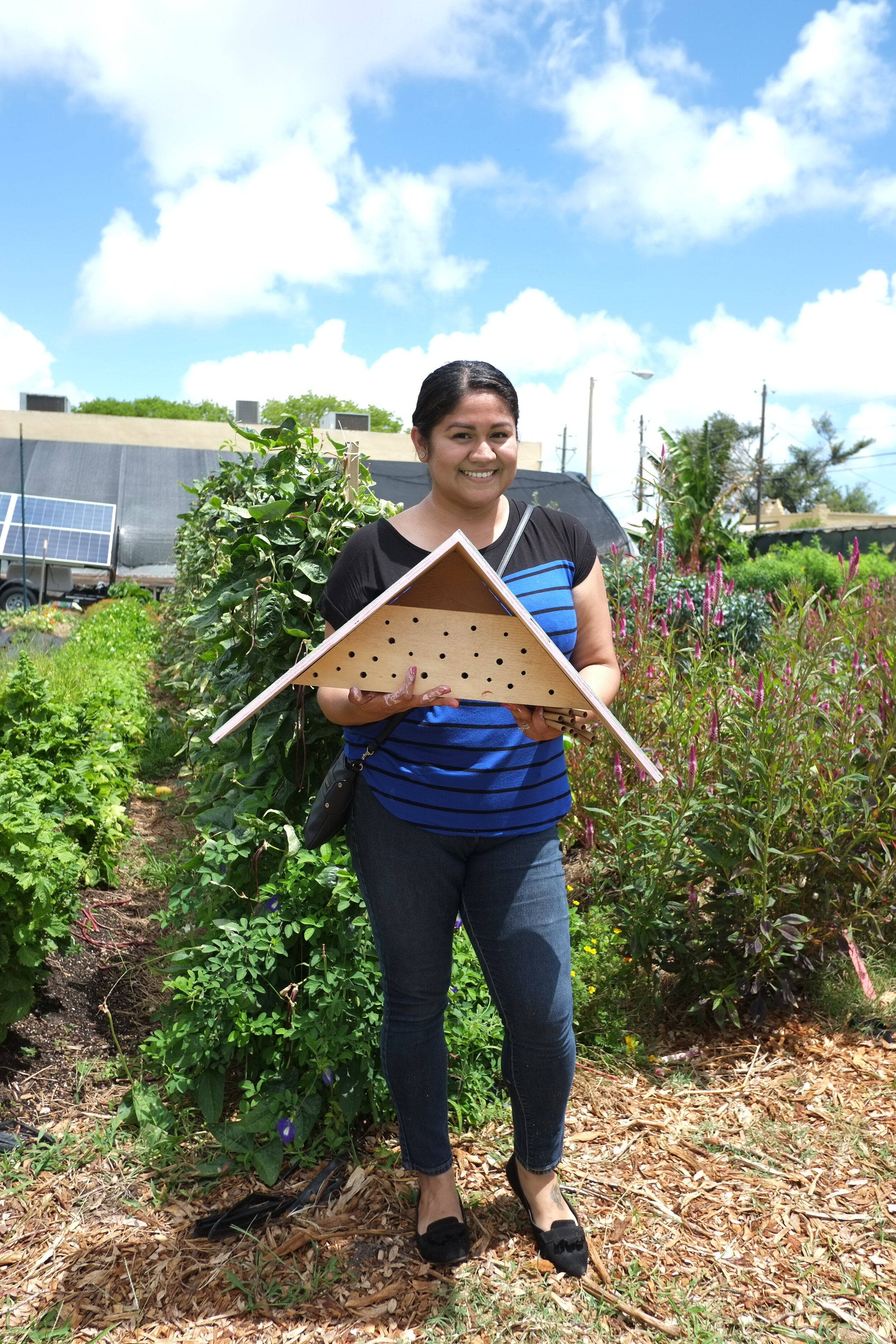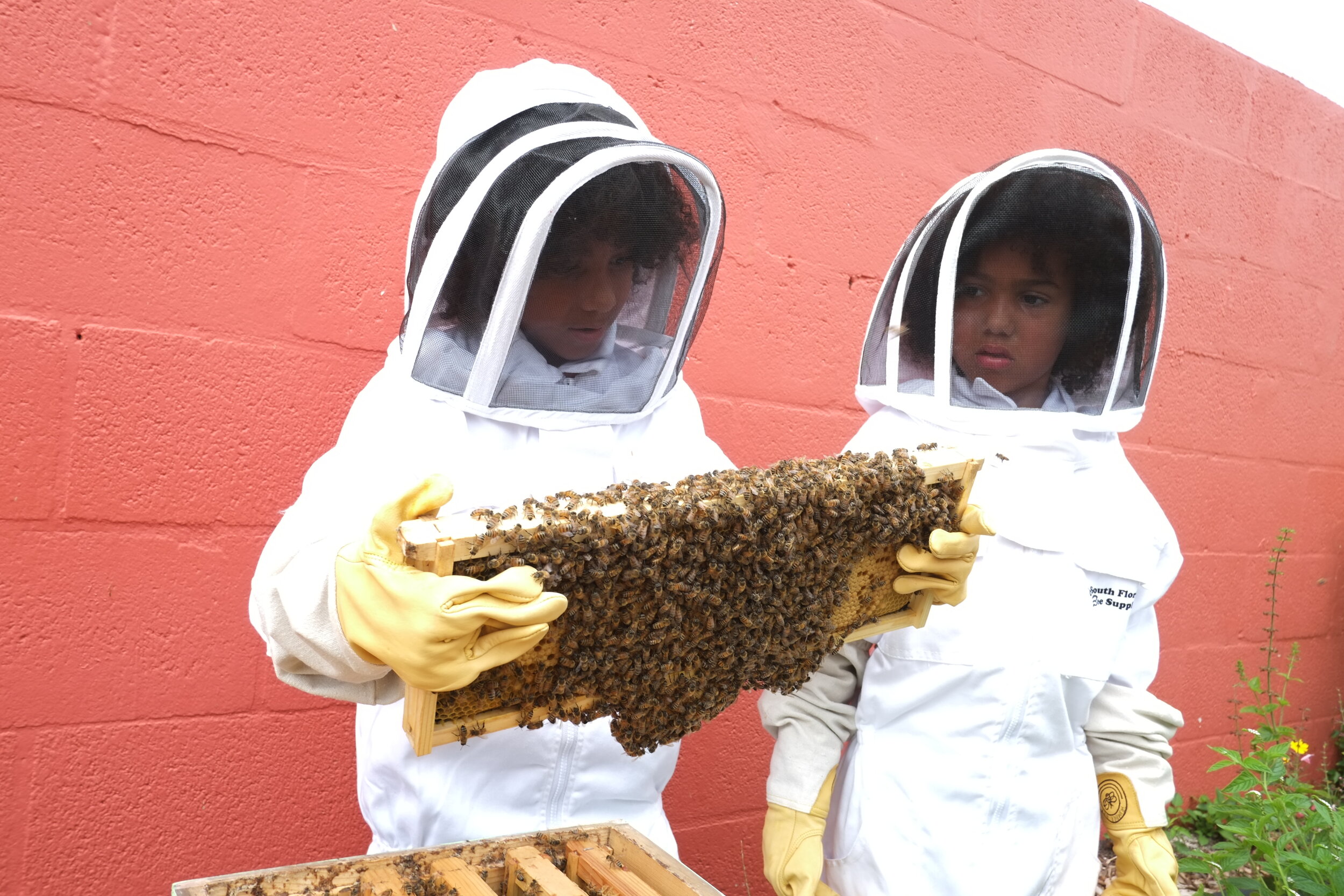WaveMaker Grantee: Danielle Bender
Written by Danielle Bender and Locust Projects. All images courtesy of the artist.
Interview with the Artist
Tell us about your WaveMaker project: Public Hives was a project that promoted community pollinators by placing beehives in neighborhoods and parks in Miami, creating greater access to educational opportunities while presenting with the arts in mind.
We had a location in Little Haiti and a location in Allapattah and presented workshops all over Miami-Dade County.
The WaveMaker grant in specific went towards funding commissions and workshops that encouraged visitors to learn about pollinators through the arts. We commissioned 6 different artists to design hive boxes, prioritizing women and BIPOC, and predominantly artists that lived, worked in or had strong connections to the communities the hives were in. The artists we commissioned included Serge Toussaint, Reginald O’Neal, Nicole Salcedo, Addonis Parker, Adler Guerrier and Nadia Wolff.
We also completed an architectural/design-oriented workshop focusing on building native bee hotels designed by the Women in Architecture program at University of Miami.
We dabbled in a sound-based workshop with musicians Thom Wheeler Castillo and Emilie Milgrim of Archival Feedback, and supported research and development for artist Franky Cruz’s Mexico Monarch Migration.
What was the easiest aspect of this project? What was the most challenging? Did you learn something new? What do you wish you had done differently? What went perfectly?
Hands down, the easiest part was selecting and commissioning the artists. It was a unique challenge to present artists with such a specific topic (pollinators), but super rewarding to see each person’s unique take on the subject. Adler in specific looked at colors and shapes and the role design plays in Little Haiti’s buildings and applied it to the hive he designed. Serge took a different approach and painted different fruit that are pollinated by bees. Seeing the end result of each person’s painted box was a really fulfilling moment.
When we did the bee hotel workshop, I was completely floored at the response. Attendees were radically different from one another and complete strangers, but working together on building their own bee hotels together. Some marveled that it was the first time anyone had ever trusted them to use power tools in public (whoops…I hadn’t thought of that…) and they felt really empowered to build something. The architects that designed the hives? They mentioned that while they get to design things often, since they were in school, they didn’t often get to see things they had designed come to fruition. This felt really satisfying to hear.
Lastly, we were planning to distribute signage for the visits, translated in both Creole and Spanish and designed by an artist. We had everything translated and set to be designed but had to put a pause on programming shortly before, due to a move.
I would say the biggest challenge we faced was having to move locations mid-year. That and the weight of running a full-time project in addition to my full-time job. While much of the backend work (scheduling visits, putting together programming, grant writing, grant reporting, etc) was familiar, the workload started to weigh on me after 2 years going non-stop. That, combined with a family emergency brought me to the disappointing conclusion that I just couldn’t keep up with the project if I wanted to maintain it at the high quality that it had been functioning at up to that point.
If I could do things differently, I would’ve taken a short leave from my main job to create a little more foundation that didn’t solely rely on me. And something that could sustain with community interest and community leaders. My advice to anyone taking on an ambitious community project is to talk to the community, gauge their interest, and prioritize community leadership in your programming. It’s essential and something I will prioritize in any future projects.
Tell us what you're most excited about as a result of this project? Has it inspired a new work, collaborations, direction? Has it brought new opportunities for expanding it through other grants or exhibitions? What, where, and when? Tell us more...
The thing that excited me the most about this project was seeing people learn about community while observing communities (bees). Visitors and followers learned about the commissioned artists and makers in Miami, artists and makers learned more about their natural environment…some even became beekeepers. What we accomplished in such a short time is creating lasting connections that bridged communities.
In one sentence - what one thing about doing this project will stay with you?
Mission and method will always come second to celebrating community.
PUBLIC HIVES was run by arts administrator + beekeeper, Danielle Bender, in collaboration with beekeeping mentors and mentees Natalia Menocal, Lacey Bray, Derek Gabaldon, Christian Acevedo and Gabriela Rosado.
Danielle Bender received a Cycle 4 WaveMaker Grant in 2018. Since 2015, WaveMaker Grants have awarded $399,000 in grants to 77 Miami’s most visionary artists, collectives, and curators.
WaveMaker Grants at Locust Projects is made possible by support from the Andy Warhol Foundation for the Visual Arts and is part of the Warhol Foundation's Regional Regranting Program. Part of a national network of Warhol-initiated regranting programs, WaveMaker Grants is the first in the southeast. For more information about the Warhol Foundation's Regional Regranting Program, please click here.

